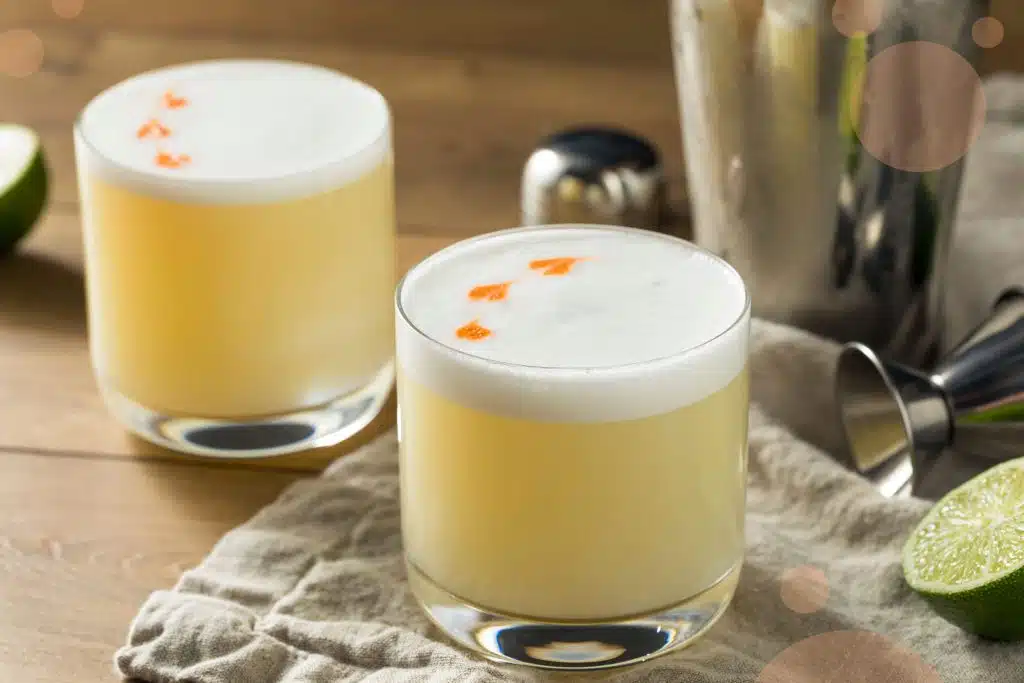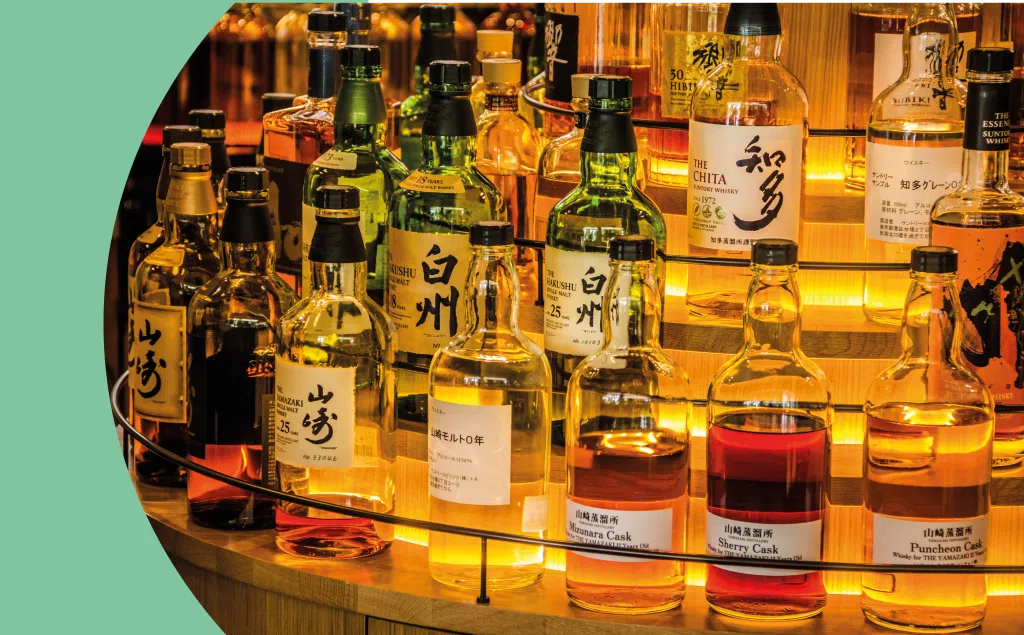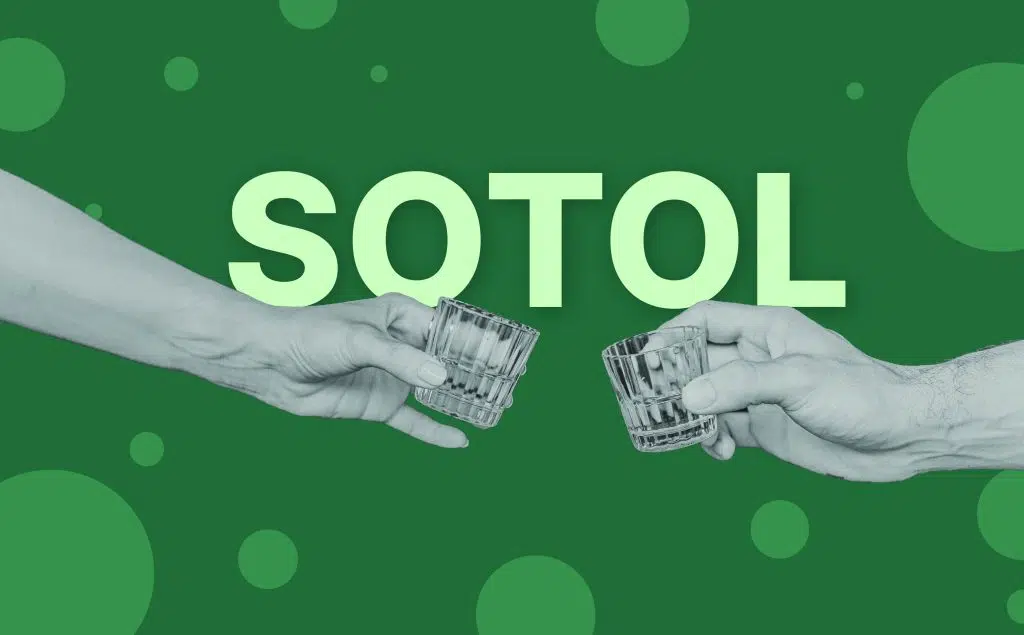Bianca Lima, bartender at Mexico City’s Handshake Speakeasy (No.3 in The World’s 50 Best Bars 2023) shares some of her favourite cocktail foam tips and tricks.
Foam in drinks is nothing new.
Long before the arrival of the cocktail, foams were doing their magic in juices and ales. They were regarded as an inviting element of the drink, an extra something that could elevate the experience.
And who would argue against this? We all love a bit of foam!
The attraction to foam-like texture is inherent within us. Think of foods like marshmallows or even fluffy-textured sweets. Even from a young age, we’ve grown up with this strange appeal to foam and its feeling within our mouths.
With that in mind, it makes perfect sense that mixologists would use this in great mixed drinks, granting the drinker another texture to enjoy during their cocktail experience.
From nitrous oxide to siphons to Agar Agar, we’ll teach you all there is to know about this form of molecular mixology, so you can lift your bartending to the next level!
History of Foam Cocktails
The foams we use today in cocktails owe their existence to the emergence of molecular gastronomy in the 1980s.
French chemist Hervé This and English physicist Nicholas Kurti joined together to explore the potential of using foam in cooking. They wanted to look into the ingredients and the chemical reactions that form. Their work proved to be successful and word spread of this new, innovative technique in the kitchen.
The idea behind it was to create something truly unique. To achieve new flavours, colours, shapes and textures, something existing cooking techniques simply could not offer.
Chemical components used to achieve this feat, like dyes, nitrogen and emulsifiers became standard tools to deliver such a product. And, as time went on, foams slowly reached the world of classic cocktails.
How to Make a foam: 3 Techniques
Firstly, what is foam?
In technical terms, foam is nothing more than a substance formed by trapping air or gas inside a liquid or solid.
In bartending, this can be as easy as dry-shaking egg white or using an oxygen pump to achieve a neat collection of bubbles.
So, let’s get into the experimental techniques every mixologist must know to raise their game:
Technique 1: Siphon and Gas Foam
The best-known and most popular foaming technique uses a whipped cream siphon and nitrous oxide gas.
To make a great foam with this technique, you’ll need to consider three elements: flavour base, emulsifying agent and the gas.
First up, choose your flavour base.
Fruit juices, teas, spice extractions and even alcoholic beverages are all possible elements to flavour the foam. You have to make sure you balance these flavours early on because once you foam, you cannot un-foam!
Next, you’ll need an emulsifying agent. This is important because it influences the texture and actually makes it foam. There’s a whole variety of options for this part like Agar Agar, gelatin, egg whites, milk cream or artificial emulsifiers like those used in ice cream production.
It’s important to remember your ratios and partnerships of the flavour and emulsifying ingredients. This way, you can learn from any problems that happen during the foaming process. For example, using a citrus flavour base with a cream-based emulsifier could mean you risk curdling the foam. Try changing the emulsifier in this case to something like Agar Agar, if this problem arises.
As an added point, it’s also worth mixing and matching emulsifying agents to produce different textured foams. It’s all about preference. Trial and error is the best way to find out what works for you, so don’t be afraid to fail!
Lastly, you’ll need some gas. Nitrous oxide is a very popular choice for its lack of flavour but carbon dioxide is also used. It can slightly change the flavour of the foam, however, which is why the former is preferred.
Top tip: Look into industrial ice cream emulsifiers. Whilst they’re not the most natural option they open up a whole range of possibilities for foaming. Imagine the wildest flavours, colours and foam densities. These emulsifiers can make it happen, elevating your creations!
Extra tip: Make sure to filter your mixture well before pouring it into the siphon. Even the smallest of particles can cause small, stubborn blockages and, therefore, big problems.
Technique 2: Air foam
Next up, we have the ‘airs’.
These are foams that are much lighter than those made through a siphon and they’re most often salty, so perfect for a Margarita.
However, achieving the perfect texture is no easy task…
For this foam technique, you only need a flavour base and emulsifying agent – of which there aren’t many options. Soy lecithin, sucrose esters and Agar Agar are the most widely used.
If you want to use an alcoholic base, stick to wine and beer. Very high-proof bases don’t often react well with this technique, but if you’re looking to go non-alcoholic, herbs like basil, coriander and celery work nicely for a little botanical hit to your drink.
Once you’ve chosen the emulsifier and flavour, it’s time to foam.
This technique requires a delicate touch. So to make it a little easier, I’d recommend using lecithin and adding it little by little as you hand blend. Keep blending until you have yourself a homogeneous mixture.
You may find that this part creates all the foam you need for a delicious cocktail. But if it doesn’t, then you can head to your nearest pet shop and buy yourself an oxygen pump for an aquarium. This pressurised pump will ensure you get a nice collection of bubbles from your mixture.
(Just make sure it’s a new pump, ha!)
Technique 3: In-cocktail Foam
The last foam technique is the simplest and involves emulsifying within the cocktail itself.
By using egg whites, aquafaba or even pineapple, you’ll be able to achieve a lovely foamy top to your drink after pouring.
Creating a foam this way will, again, mean you get a different type of foam. Using egg whites or aquafaba will get you a thicker, airier foam. Be aware, however, that these two emulsifying agents can influence the taste of the cocktail slightly.
By using other emulsifiers like pineapple, coffee or tea, you’ll have a more watery foam when blended or shaken, but one that holds all the flavours of the cocktail. Delicious!
Finally, remember foam is not a gimmick; it’s a demonstration of expert skill and careful consideration. Foam is a part of the cocktail flavour itself – and should be treated as seriously as the liquid it sits upon.
Don’t just serve up a drink, serve up an experience!
Recommended Reading
Want to know more about foam cocktails? The following books will refine your knowledge:
- ‘Liquid Intelligence The Art of the Perfect Cocktail’ by Dave Arnold
- ‘The Aviary Cocktail Book’ by Allen & Sarah Hemberger, Micah Melton, Nick Kokonas, Grant Achatz










